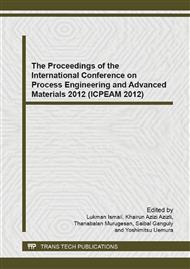p.292
p.301
p.307
p.317
p.325
p.332
p.342
p.350
p.360
Hydrogen Adsorption Capacity Investigation of Ni-Co-Al Mixed Oxides
Abstract:
Micro-mesoporous mixed oxides containing nickel, cobalt and aluminum have been synthesized using conventional coprecipitation method. FESEM and HRTEM analyses demonstrated the flower and hexagonal plate-like nanostructured of mixed oxides. Different mixed oxide formation, homogenous metal dispersion, textural properties were investigated using XRD, ICP-MS and BET (N2 adsorption-desorption) techniques. nanostructured mixed oxides exhibited 2.6 wt% hydrogen adsorption that were studied using temperature programmed reduction-adsorption-desorption (H2-TPR/TPD) and thermogravimetric and differential thermal analysis (TGA-DTA) techniques. Investigation corresponds that morphologies, textural properties and surface energy of mixed oxides are important in hydrogen adsorption.
Info:
Periodical:
Pages:
360-364
Citation:
Online since:
June 2014
Authors:
Keywords:
Price:
Сopyright:
© 2014 Trans Tech Publications Ltd. All Rights Reserved
Share:
Citation:


